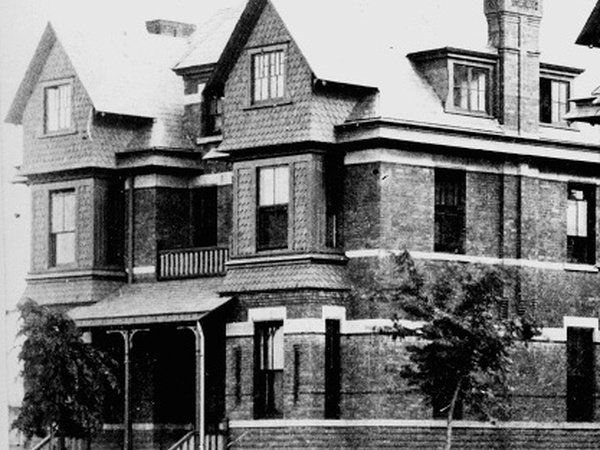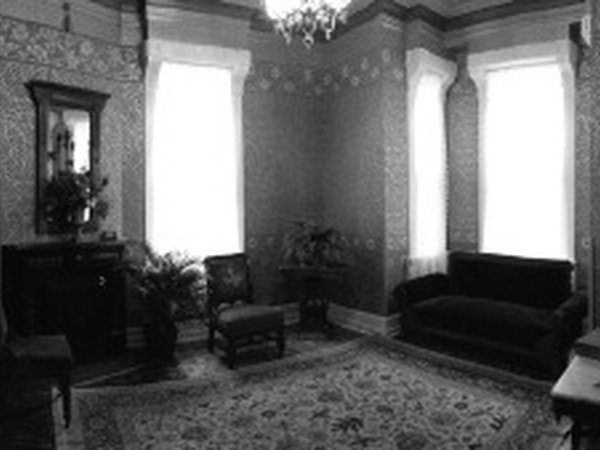Pullman House Project
The Town of Pullman was designed by architect Solon S. Beman in 1880 for the Pullman Palace Car Company. The housing included well-appointed executive homes and a wide range of row houses, apartments, and small flats for workers. Nearly 1,000 of the original housing units remain in Pullman and are privately owned. The Thomas Dunbar House, an executive house, is available for public tours by special arrangement.
11141 South Cottage Grove Avenue
Chicago, IL 60628
773-785-8901
This house museum is accessible.
Tours of the Pullman Historic District and the Pullman House Project's Thomas Dunbar House are arranged by appointment only.
-
Queen Anne Style
The Town of Pullman is the earliest and largest-scale usage of Queen Anne architecture in the Midwest. Using primarily brick construction, architect Solon S. Beman favored this simple, yet elegant, style first popularized by English architect Richard Norman Shaw.

-
Afternoon Tea
The Pullman House Project collection of decorative arts includes over 1,000 pieces of English ironstone variants of the Tea Leaf pattern, English and American variants of the India Tree china pattern, and many fine examples of American Brilliant cut glass.

-
Pullman’s Sideboard
One treasure from the Pullman House Project collection is the grand sideboard built for George Pullman's private home on Prairie Avenue, a section of the city known as “Millionaire’s Row.” We also have a large collection of Victorian furnishings, including Eastlake-style furniture made by the Tobey Furniture Company for Pullman's Hotel Florence.

-
George M. Pullman
George M. Pullman, the industrialist who invented the Pullman sleeping car, was a great innovator. The Town of Pullman, which was operated by his Pullman Palace Car Company and included churches, shops, parks, and theaters in addition to comfortable housing for his factory workers, was a stage for showcasing his work to the world.

-
City, State, and National Landmark
Preserving Pullman has long been a labor of love from the grassroots of committed residents. The Pullman House Project is currently restoring select residential structures to showcase life in Pullman during the Victorian era. The project is a joint effort of the Historic Pullman Foundation and the Bielenberg Historic Pullman House Foundation, both 501(c)(3) not-for-profit organizations.

-
Queen Anne Style
The Town of Pullman is the earliest and largest-scale usage of Queen Anne architecture in the Midwest. Using primarily brick construction, architect Solon S. Beman favored this simple, yet elegant, style first popularized by English architect Richard Norman Shaw.

-
Afternoon Tea
The Pullman House Project collection of decorative arts includes over 1,000 pieces of English ironstone variants of the Tea Leaf pattern, English and American variants of the India Tree china pattern, and many fine examples of American Brilliant cut glass.

-
Pullman’s Sideboard
One treasure from the Pullman House Project collection is the grand sideboard built for George Pullman's private home on Prairie Avenue, a section of the city known as “Millionaire’s Row.” We also have a large collection of Victorian furnishings, including Eastlake-style furniture made by the Tobey Furniture Company for Pullman's Hotel Florence.

-
George M. Pullman
George M. Pullman, the industrialist who invented the Pullman sleeping car, was a great innovator. The Town of Pullman, which was operated by his Pullman Palace Car Company and included churches, shops, parks, and theaters in addition to comfortable housing for his factory workers, was a stage for showcasing his work to the world.

-
City, State, and National Landmark
Preserving Pullman has long been a labor of love from the grassroots of committed residents. The Pullman House Project is currently restoring select residential structures to showcase life in Pullman during the Victorian era. The project is a joint effort of the Historic Pullman Foundation and the Bielenberg Historic Pullman House Foundation, both 501(c)(3) not-for-profit organizations.


